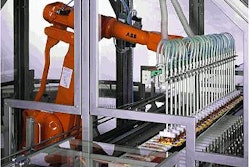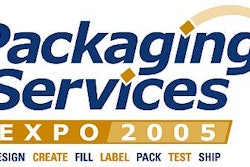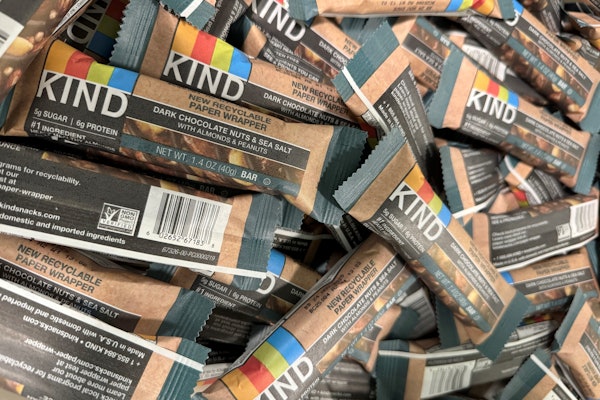
About the writers: Manish Bhuptani and Shahram Moradpour are co-authors of RFID Field Guide and cofounders of Cleritec Systems, a provider of RFID solutions for manufacturing and pharmaceutical industries.
“Should I do a full-scale RFID implementation or just go with Slap and Ship”? This is, by far, the most common question we get asked as we travel across the country for trainings and client meetings. We usually answer with a question of our own just to get the discussion started: “Do you think the two approaches are mutually exclusive”? The idea that a Slap and Ship (RFID deployment) is something completely different than a well planned RFID roll-out is a misconception that is the result of hype and, to a certain extent, information overload about RFID. In this article, we are going to demystify the popular notion that Slap and Ship is a quick and dirty approach to RFID adoption and that it eventually leads to a waste of your investment.
What it is
Let’s begin by defining the expression “Slap and Ship”. Slap and Ship is essentially the process of applying (slapping) an RFID tag-most likely a smart label that doubles as a bar code label—on a case or a pallet and shipping it out. This is, in fact, one of the last steps in most RFID-enabled supply chain operations, but not the only step. Looking at it this way turns Slap and Ship into an activity that is part of a well-thought out RFID project, not an alternative to one.
Given this context, the real question then becomes: “What exactly are the steps to consider in an RFID roll-out?” Let’s answer this question first and then come back to the Slap and Ship discussion.
The best approach to an RFID roll-out is to think of it as a five step process.
STEP 1
The first step is to identify your business objectives. This, in turn, will let you determine the initial scope of the project. We’ve all heard about improving efficiency and lowering supply chain costs, but RFID can also help open new revenue opportunities. For example, RFID data might give you better visibility into customer purchase patterns. That insight might help your sales people with existing customers or spot new revenue opportunities. Of course the business objective of: “I don’t want to lose my customer who is demanding RFID compliance” is a good one, too. Accurate identification of the business objectives will also allow you to determine the right stakeholders—internal (manufacturing, operations, business unit, IT) or external (suppliers, channels). The time spent in getting stakeholders’ buy-in on project objectives and scope will significantly increase the chances of success for the overall project.
Step 2
The second step is to determine technical aspects of the project. The two key issues are selection of the right RFID infrastructure and the level of integration with back-end systems. The first may involve some experimentation since all tags are not created equal. Some work better on certain products or packaging and under certain environmental conditions. Therefore, it is important to find the RFID infrastructure components that work well within the scope of your project. The level of integration with back-end systems may significantly affect the cost, schedule and usability of the project, and should be carefully defined. It may even lead to a revision of the project scope defined earlier.
For example, can your warehouse management system handle RFID tagged items? If not, what does it cost to get an upgrade and who would help you with the integration? Do you need to adjust your production line speeds to handle a slower RFID tagging process? How many different products, and how many of each, need to be RFID tagged? While you may not have to answer each question that comes up in this step, knowing what all the questions are and planning for the answers will ensure a successful outcome as you expand your RFID operations. We recommend that you enlist the help of a “trusted advisor” here. A trusted advisor will not have any ties to RFID component vendors and can help you objectively select and test various combinations of components such as tags, readers, printer/encoders, as well as provide guidance on integration issues.
STEP 3
The third step is to identify and execute a pilot. The pilot itself should be defined so that it accurately reflects the eventual business and technical environment. This way, the issues resolved in the pilot will reduce critical problems from the full-scale deployment. The pilot would let you test many of your assumptions and selections. For example, you may have to do some experimentation with tag placements since the location you apply a tag on cases and pallets can yield different results depending on the content of your cases and your handling processes. You may also uncover business process re-engineering issues. Your trusted advisor can help you with process re-engineering and training.
STEP 4
The fourth step is to build and deploy the actual solution, leveraging the lessons learned from the pilot. The focus should be on roll-out with predefined milestones, training, and communication about the solution. The build-out often involves not only the solution, but also the necessary technical and organizational infrastructure to ensure that the whole organization is mobilized to make the project a success.
STEP 5
The fifth step is sustaining and improving what you have. It is critical to measure the results against the goals and make necessary corrections. Incorporation of new technological advancements may also help improve results. The scope of the project may also be expanded to further leverage existing RFID infrastructure.
Now what about all of the companies who are mandated to deploy RFID in a certain timeframe? You may not have a choice in terms of timeframe or payback period. Even in that case, don’t think of Slap and Ship as something entirely different from a well-planned RFID deployment. Start with the vision of where you eventually want to be, and execute towards it. Along the way, you will find Slap and Ship is a necessary step.
Cleritec Systems, a provider of RFID solutions for manufacturing and pharmaceutical industries, advises companies on how to deploy RFID successfully. The company’s cofounders’ past experiences include executive leadership and business development at Sun Microsystems, consulting to Fortune 500 companies, and distributed software development.
























